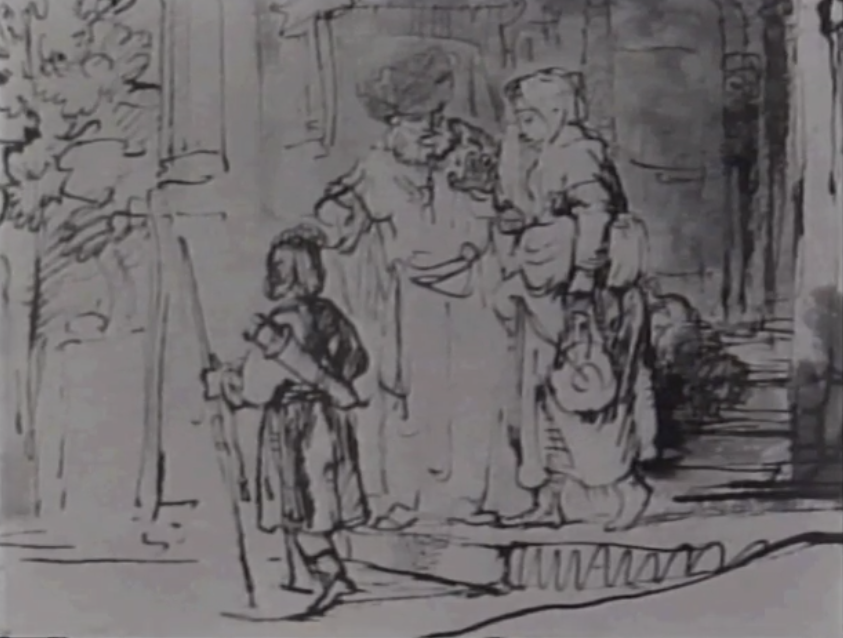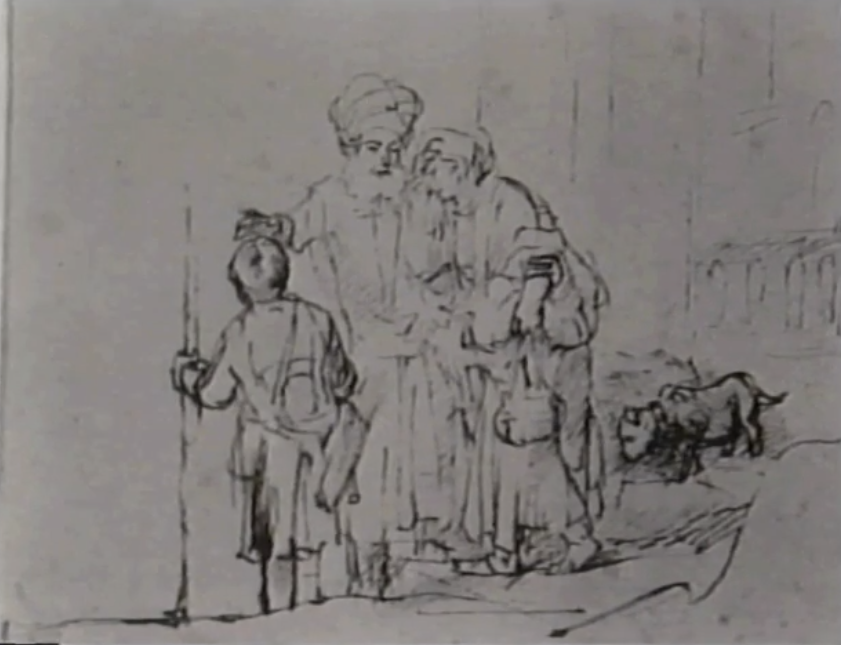The great advantage I have over the professional art historians is that my training and life has been in art not in art history. Art historical training since 1915, the publication of Wolfflin’s “The Principles of Art History”, blinkers it’s students. It has led to the study of style instead of art. And style seems to have become limited to handwriting as far as most of it’s exponents are concerned.
They believe they are being more scientific: limiting themselves to what they can see rather than responding fully to the meaning of the marks on the page, which after all is what art is about. As a result their studious efforts contain none of the insight that might help us to understand why artists have valued Rembrandt’s drawings so highly. Compare my appreciation of Rembrandt’s drawing of exhausted motherhood, (link) with the British Museum catalogue entry for the same drawing: Three pages of description of the marks, which conclude with the near deattribution of this wonderfully, truthful, life-illuminating drawing. Three pages with no indication of what the marks might mean humanly. Not that Mr Royalton Kisch, the author, is a fool, his professional training has blinded him to such “unscientific” considerations; sad, particularly when dealing with the artist who has taught us most about how we communicate subconsciously through body language.
Another example of the same might be found in my article for Peter Fuller (link) where I write about Rembrandt’s drawing “David on his Deathbed Appoints Solomon as his Successor” one of Rembrandt’s most profound and heavily worked masterpieces but nonetheless deattributed by Benesch in 1922.
In all modesty I must claim that my work has more science with probably the most clear proofs that art history has ever provided of what actually went on in the studios. My admirers have dubbed me the Sherlock Holmes of art history for good reason. No one else has shown how desperately we need a thorough reform of art history itself, it’s recruitment and training. As Prof. Gombrich has noted art history is an area “ particularly vulnerable to the springtides of myth”. Art myths have been with us for so long, they are a part of our belief system and culture, it is very difficult to persuade people they are nonsense. The power of the visual imagination is one such myth - Rembrandt in his utterances and in his work was dead against working from imagination; it was “worthless in his eyes”and his flying angels were designed to show how worthless they are, because they cannot be observed. Yet Rembrandt scholarship insists his biblical subject were drawn “from his continually productive fantasy”.
It is very likely that the art of our time will suffer a more severe generational reappraisal than any previous generation due to the unprecedented power of present art historians over what gets noticed and supported. That unprecedented power is more derived from the technical advances of the visual media than from the quality of what they have to say. We artists need critics as spokesmen who activate the patrons but we desperately need them to be more perceptive of what art used to be about. Where they find Rembrandt a prefiguration of Andy Warhol I find him the artist most reliably true to his own vision. He spent his life trying to persuade us that observing nature/life was his aim, yet the experts want to persuade us that he imagined his most important works; their expertise depends on this dis-proven belief; I drove a coach and horses over the idea with my article in The Burlington (Feb.1977) “Rembrandt’s Use of Models and Mirrors” which proved conclusively that he drew these subjects from tableaux vivants he set up in his studio.
Art historians have built castles in the air that depend upon this false belief and they need to be exorcised. I am thinking of the discussion of the iconography of Rembrandt and his school, which can be accounted for more persuasively by seeing the differences, not as philosophical differences but as differences of physical viewpoint of the same tableau. And yes, Rembrandt had a school not a workshop. There is no mention of his workshop in the literature before the Rembrandt Research Project got to work in 1968; the workshop is a modern fabrication. Rembrandt had students who paid him twice the going rate to study with him, not assistants like Rubens’, who would have been paid handsomely by him.
The idea of wanting to trace the development of Rembrandt’s art is not absurd. Darwin had broken the mould of Genesis with his observations “The Evolution of the Species” and Rembrandt’s paintings do fall into a pattern of development from crude beginnings to immensely careful observation of detail in the early 1630s then to a steady broadening of his vision but still very much based on observation. Fortunately for us he signed and dated his paintings fairly consistently, furthermore, he used oil paint exclusively, so we are always comparing like with like in his paintings. But as a draughtsman he varies his medium from the finest etching point to chalk or the broad reed pen or brush, which are so very different to his normal choice the finely sharpened quill. These different media by nature produce very different results and Rembrandt experimented with them throughout his life. See the two versions of the kneeling John the Baptist or the two versions of the Dismissal of Hagar (1640 & 1652) which Benesch has placed twelve years apart where quite obviously they are drawn from the same seat in the studio from the same group, one after the other but with different pens.
 |
 |
|
Dated by scholars 1640 with quill and wash |
Dated by scholars 1652 with reed pen |
On occasion Benesch’s illogical and highly disruptive division is as long as 30 years: see the series “The Raising of Jairus Daughter”. How can we possible trust the experts who have tolerated and added to the confusion? since Benesch published his catalogue in 1954?
